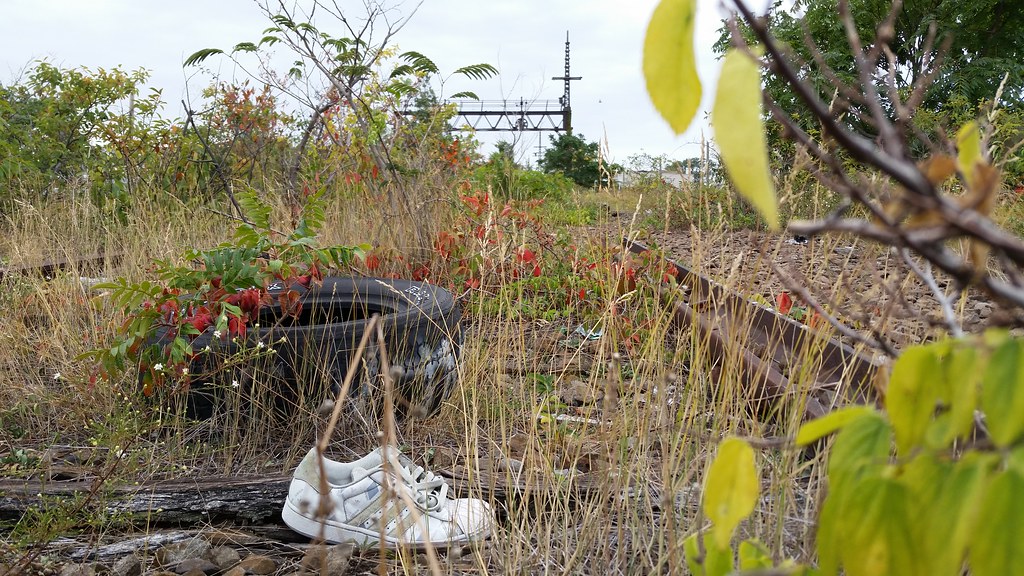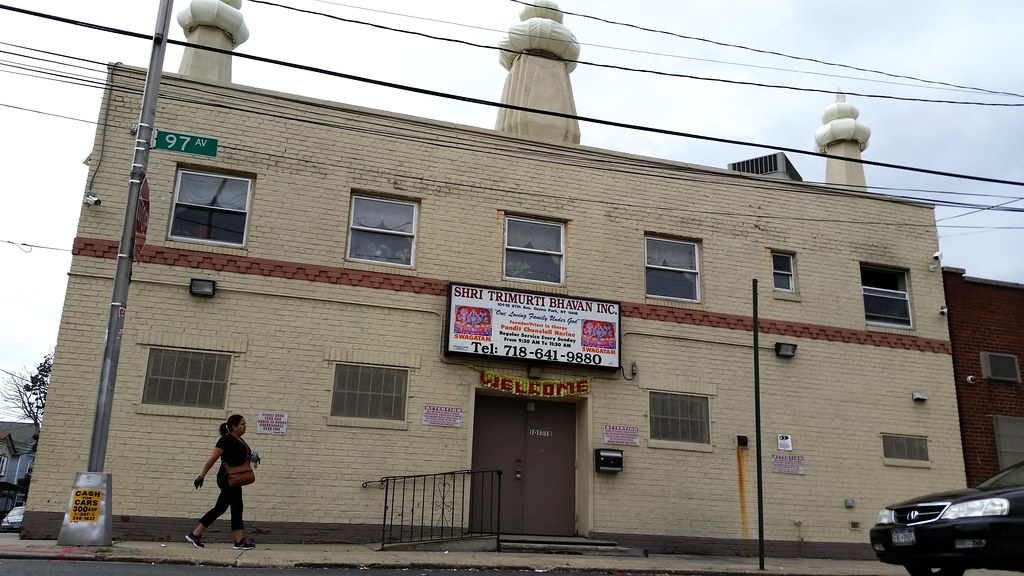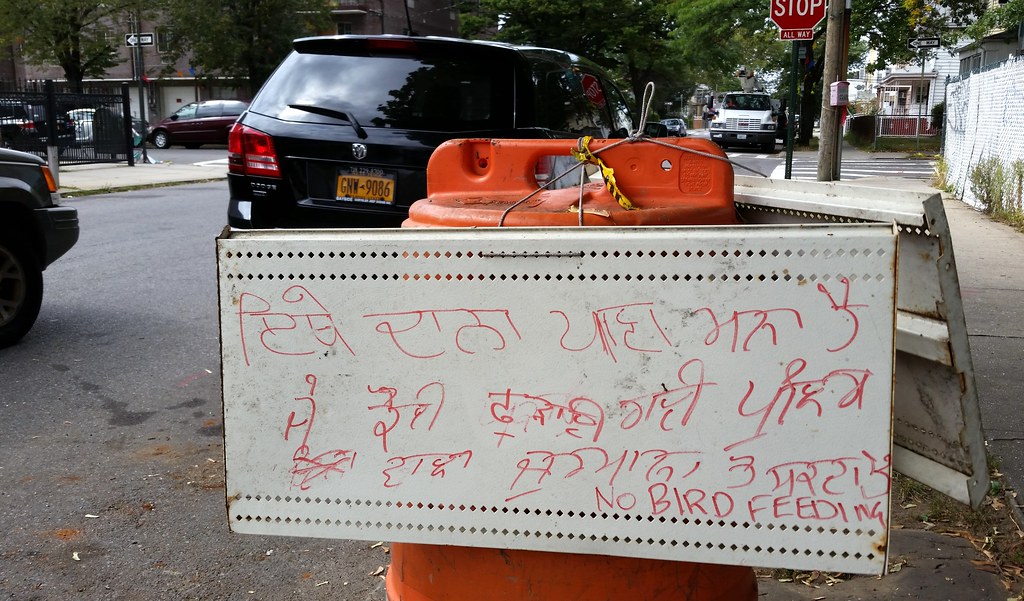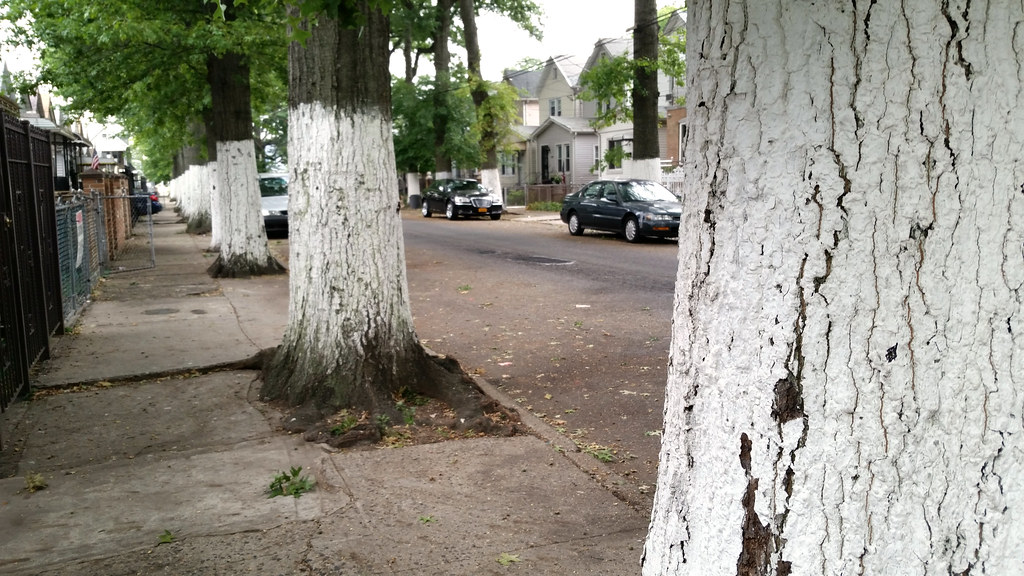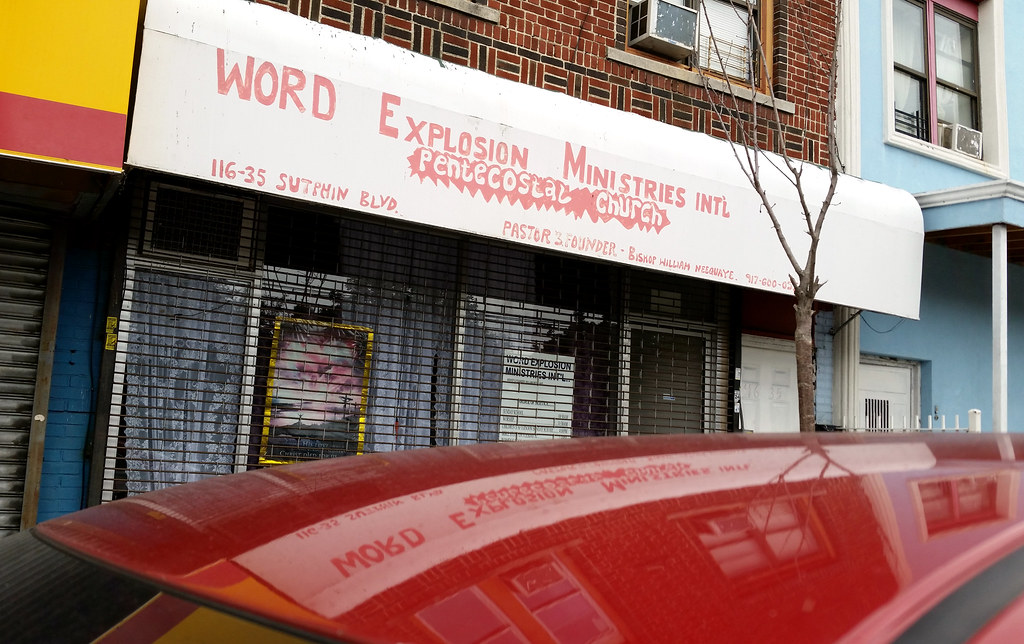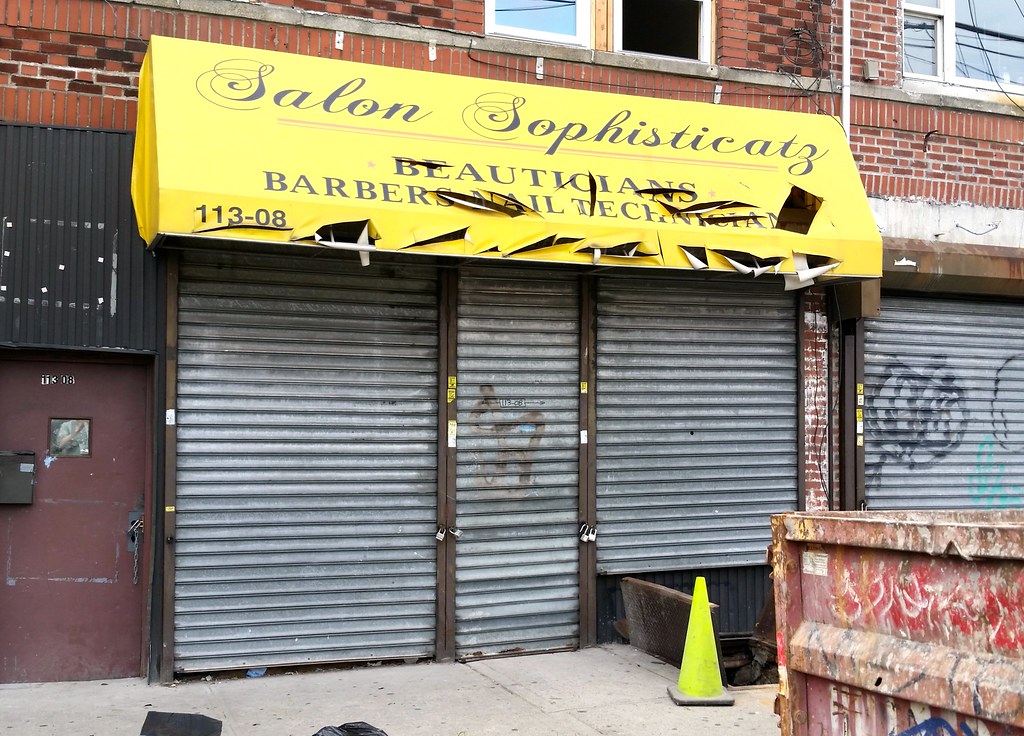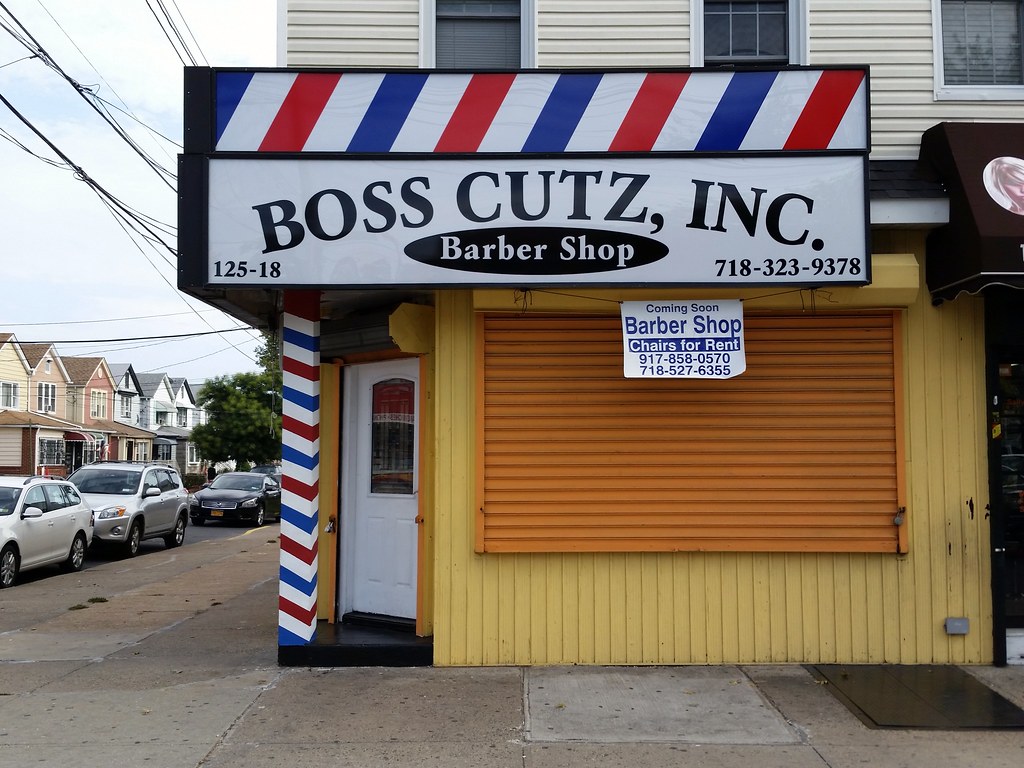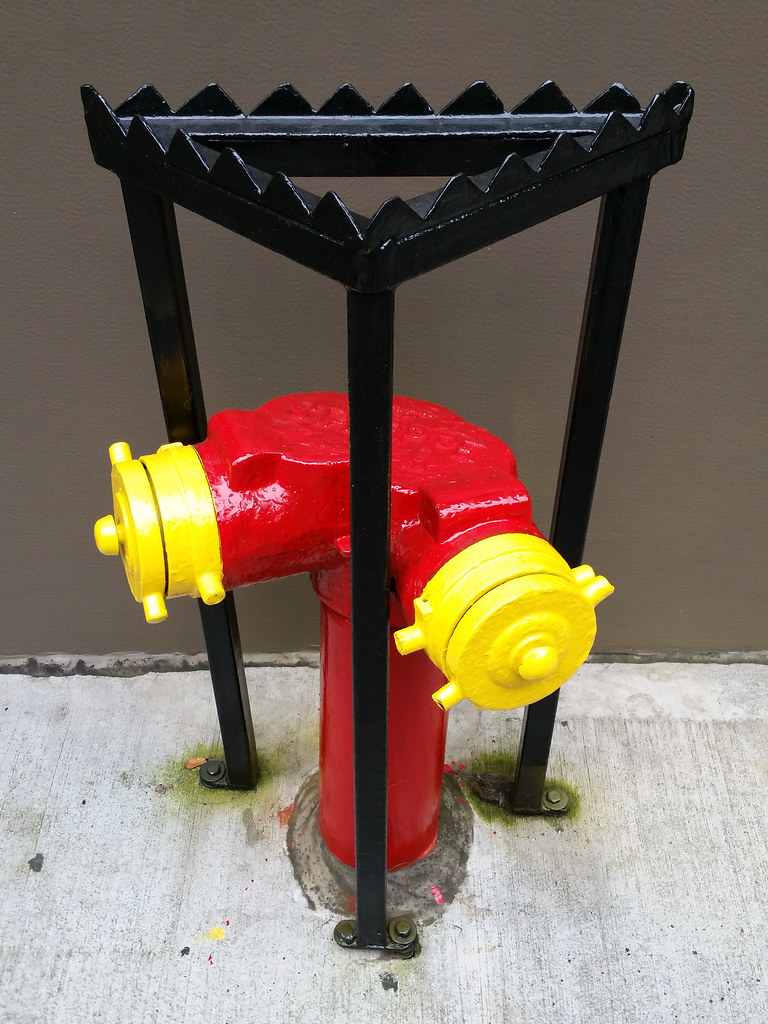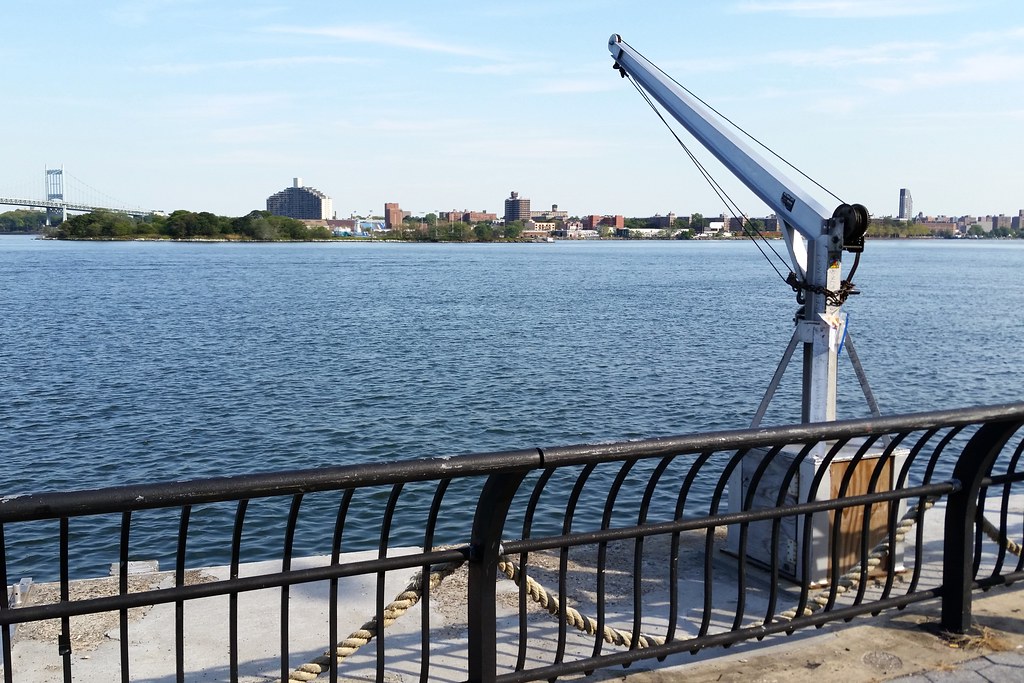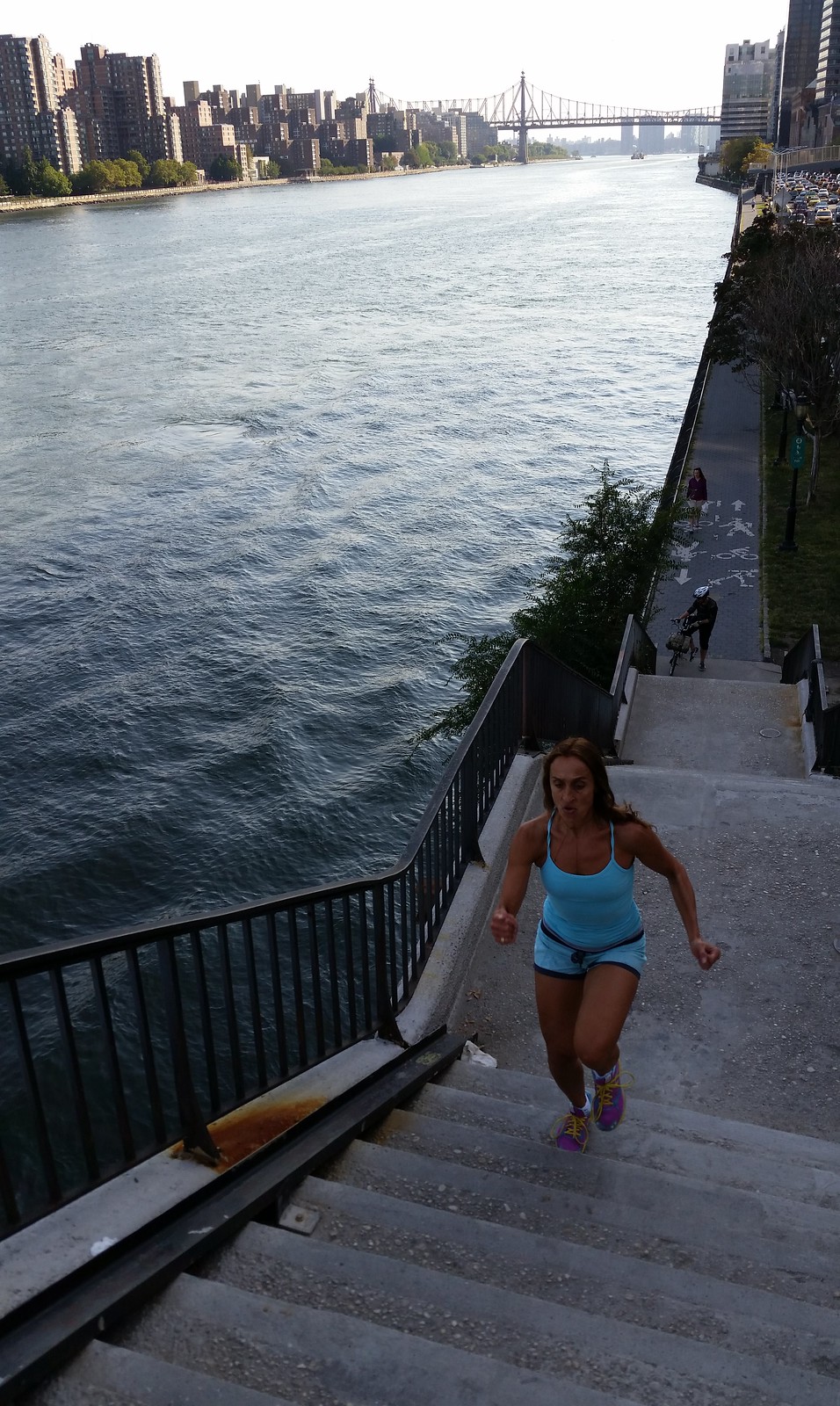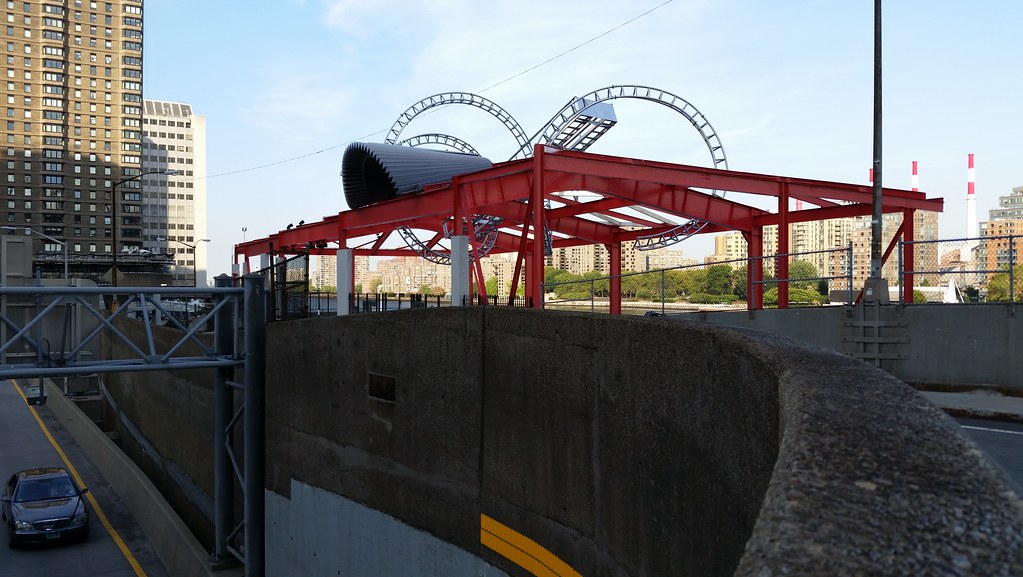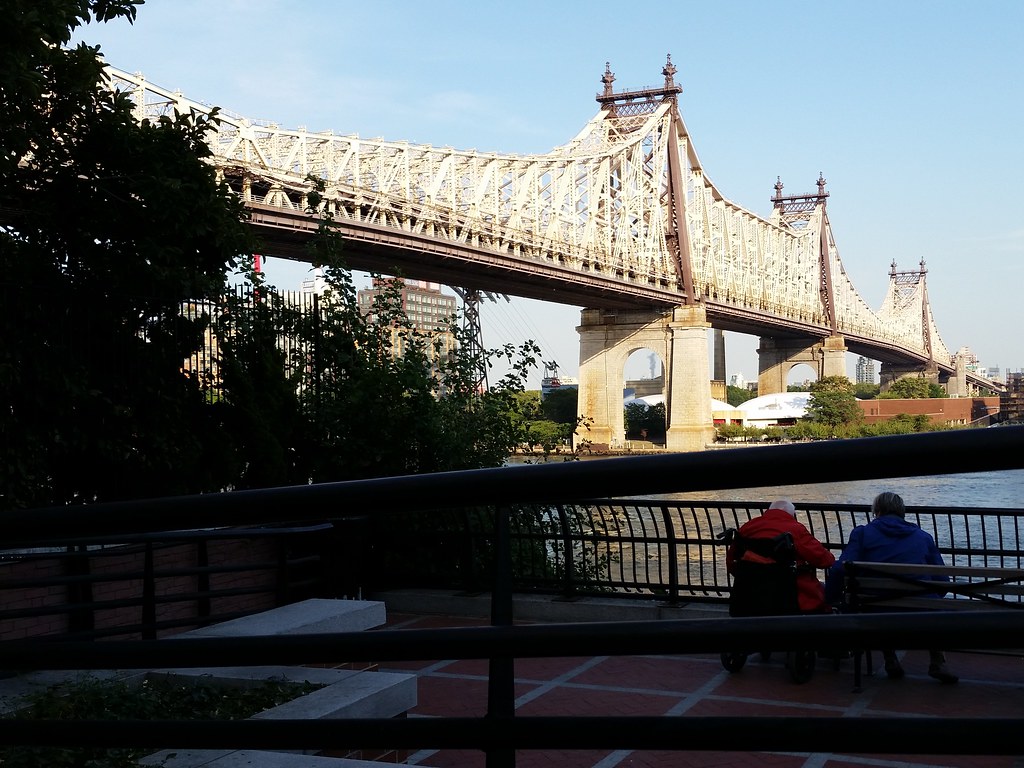

This elevated structure is part of the old Long Island Rail Road Rockaway Beach Branch, which has been out of use since 1962. There are currently two prominent, conflicting visions for the line's future: some people want to restore rail service on it, while others want to turn it into a 3.5-mile linear park, a "High Line on steroids".

When I saw this mosque, with its rooftop additions signifying the building's conversion into a house of worship, I was reminded of Shri Trimurti Bhavan, the nearby Hindu temple we just passed. And it turns out that there's more of a connection between the two places than just the visual. They both serve the area's Indo-Guyanese residents, and the mosque is actually owned by the temple!

As we learned last year, Worksman was founded in 1898 and is America's oldest existing bicycle manufacturer.

Several years ago, my friend Yoni Brook directed a short documentary about Imran taking the reins of his father's business:
At first glance, Imran Uddin is just another 27-year-old New Yorker struggling to take over his family's business—what's unique is that his father's business is a "pick-your-own" slaughterhouse. The son of an immigrant, Imran must confront his mixed Bangladeshi-Puerto Rican heritage and gain acceptance from his father's conservative Muslim community. On one of Islam's holiest days, Imran must lead a sacrifice that will define him as a Muslim, as an American and as a son.Read more here.

Since most of my readers are teenage Satanists, I figure it's my responsibility to share this pamphlet I found on the sidewalk:
I stared into the flickering black candle that sat in the midst of the skull and black-handled knives on my home made altar to Satan. Reciting the incantation, I tried to ignore my nagging thoughts. I was still young — just a teenager. How had I come to the place where I felt like I was sliding headfirst into hell?You can read the rest here and here.
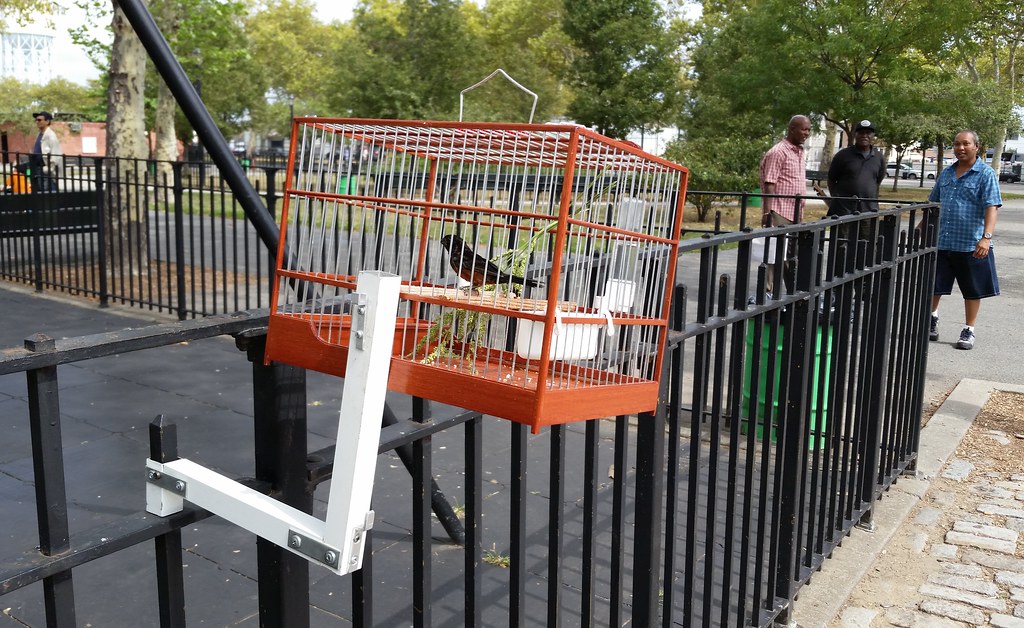
This is Phil "Scooter" Rizzuto Park, renamed in 2008 for the late, great Yankee shortstop, who played baseball at nearby Richmond Hill High School. (Other notable alumni of the school: Cyndi Lauper, who attended for a while before being expelled, and Rodney Dangerfield.) The park's former name was Smokey Oval, which "refer[red] to the park’s location, across from a Long Island Railroad terminus which once made it a landing area of soot and ash from the railway smoke", according to the Parks Department.
The NY Times reported that the area's sizable Sikh population was in favor of changing the park's name, given the religion's prohibition against smoking. As a co-founder of one of the local Sikh temples explained to the paper: "It sounds like a place for smoking and drinking and things like that . . . When we print up fliers, we have to say we are having an activity in nearby Smokey Park."
UPDATE: It turns out that this park has for decades been the center of bird song "racing" in New York. The races, which take place on Sundays, are competitions between two bird owners, typically immigrants from Guyana and other Caribbean and South American countries, to see whose chestnut-bellied seed finch (like the one pictured above) can sing 50 songs first. You can read more about the birds and the men behind them here.

Closed since the mid-1990s, this 1898 public school designed by Charles B.J. Snyder will soon be reopened as an affordable apartment building for artists and their families.
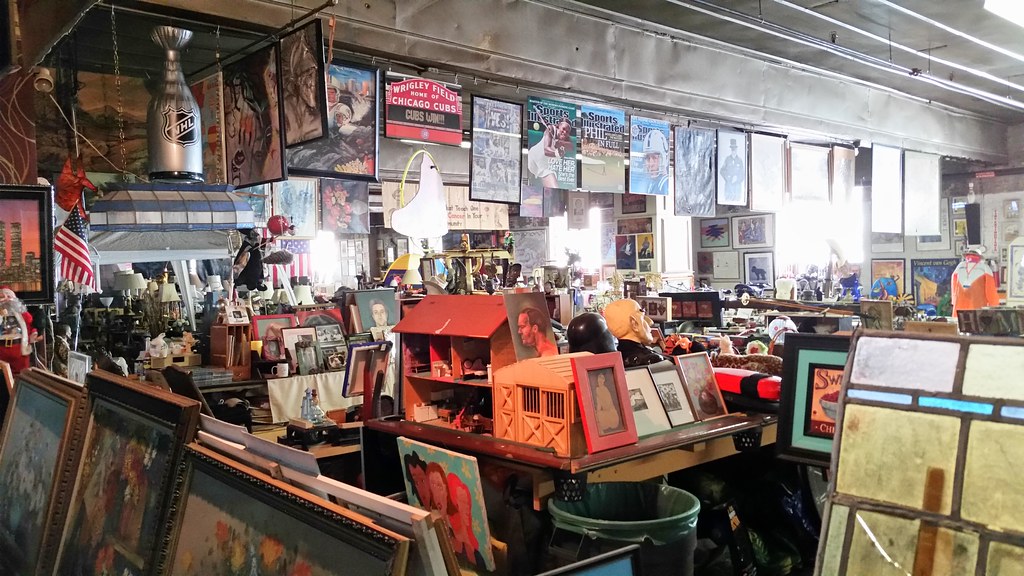
"The second floor of this [sanitation] garage, long deemed too weak to support vehicles, has become a gallery of sorts, home to hundreds and hundreds of paintings, photographs, posters and objects, neatly framed and mounted on the walls. They are varied in every way — from style to age to material — except for one: almost every last piece of the collection was rescued from household trash by New York City’s sanitation workers as they went along their daily routes."
Read more here!
(The museum is not open to the public; this is as far as I got before someone stopped me.)

at the Manhattan Grit Chamber. (We passed by the Bronx Grit Chamber last year.)
From the NY Times:
The best places to see the celebrated products of New York — its Broadway talent, its skyscraper architecture — are well known.
But the best place to see Manhattan's byproducts — what is stuffed down its sinks, flushed down its toilets and washed from its gutters — cannot be found in tour guides. There is perhaps no better vantage point than the Manhattan Grit Chamber, which strains solids from much of the borough's sewage as it flows underground to the Wards Island Wastewater Treatment Plant. . . .
"We get a lot of turtles and fish. . . . We've had a canoe come in here; it got caught on the screen. We've had pieces of telephone poles, Christmas trees. Oh, you name it — mattresses, dead dogs. We got a live dog once."
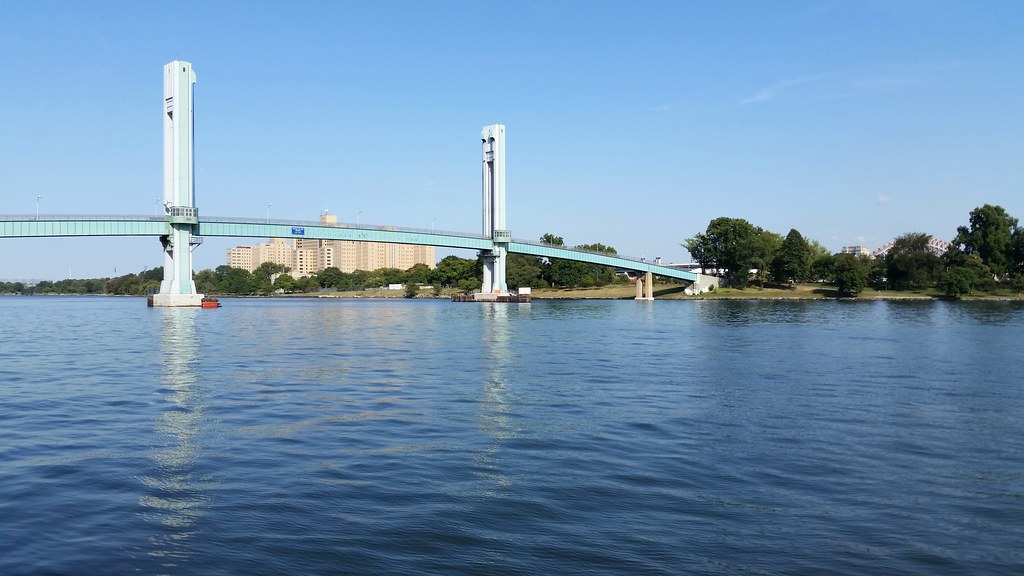
Opened in 1951, this pedestrian bridge connects East Harlem with Randall's and Wards Islands. For many years, the bridge was closed (i.e., the center span was raised, as it would be if a large boat were passing beneath) at night and during the colder months of the year because of various security concerns: residents of a Wards Island homeless shelter near the bridge crossing into East Harlem to buy drugs and cause trouble, young men from East Harlem attacking the homeless, and patients escaping from the Manhattan Psychiatric Center (visible behind the center span of the bridge) and fleeing across the bridge. The bridge was also closed for a few days around Halloween each year, presumably in response to this incident. After undergoing a major rehabilitation, the bridge reopened in 2012 and is now open to foot traffic at all times.

From a 1941 NY Times article:
Dr. Finley was New York's most peripatetic philosopher. Indeed, he had covered half the world afoot, watching the human scene with kindly eyes. . . . But it was over this peaceful and marvelous Island of Manhattan that he liked most of all to wander, counting that day lost when he had not checked off at least 10 miles. Once each year he walked entirely around the island, covering part of that promenade that now bears his name. Today, because it does bear his name and because it perpetuates his walking image wrought in iron by an artist who knew him in his forward-tilted stride, it will help others see with his understanding eyes the shimmering waters that girdle us, the towered silhouette of the city and all the friendly passers-by who give life and meaning to the Manhattan panorama.

When this generating station began operating in 1902 (here are some great photos of its construction), it powered all four of Manhattan's newly electrified elevated rail lines. It's now owned by Con Edison and is used to produce steam for the world's largest steam system.

This massive stone retaining wall beside the FDR Drive was built in the early part of the 20th century by the Rockefellers, whose namesake university stands above it. You can take a closer look at the wall's "fabulously craggy stonework" in Street View.
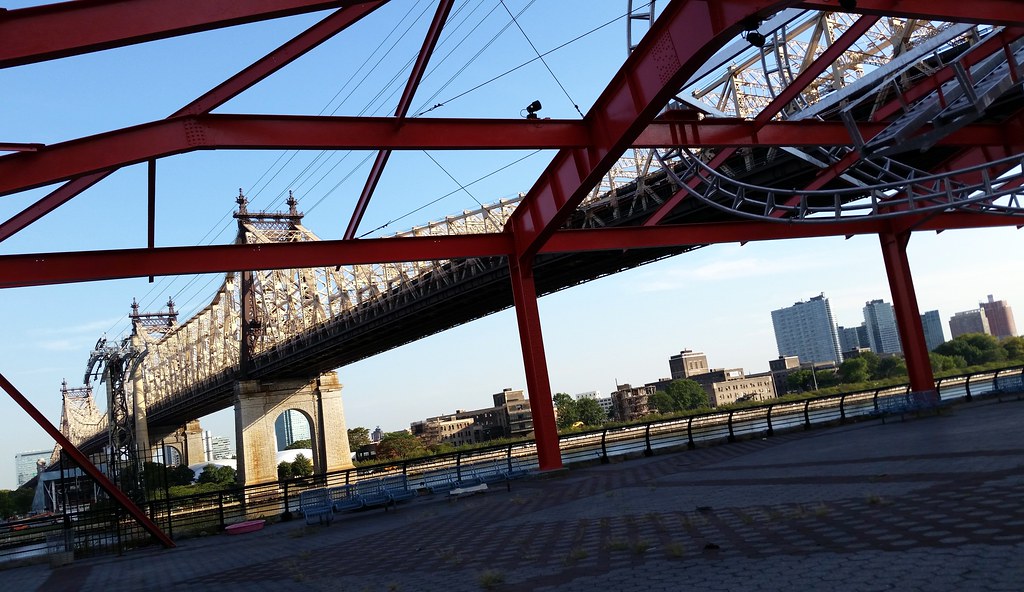
as seen from East River Roundabout, the helical aluminum sculpture mounted on top of the red steel beams. (Those beams once supported the roof of the former garbage transfer station that still stands beneath my feet.) The sculpture, dedicated in 1995, recently became part of the new Andrew Haswell Green Park, the only substantial public monument (not counting a bench in Central Park) to a man who was "arguably the most important leader in Gotham's long history, more important than Peter Stuyvesant, Alexander Hamilton, Frederick Law Olmsted, Robert Moses and Fiorello La Guardia."

The neo-Georgian town house at center has been the official residence of the U.N. secretary general since 1972. (There's a police security booth located just out of frame to the right.) The building owes its current appearance to Anne Morgan, the youngest child of J.P. Morgan, who bought two neighboring houses here in 1921 and had them rebuilt into the structure you see above. Ms. Morgan was part of "an exodus of society from Fifth Avenue and elsewhere to [Sutton Place]", which transformed this little two-block stretch into "one of the fanciest addresses in New York".
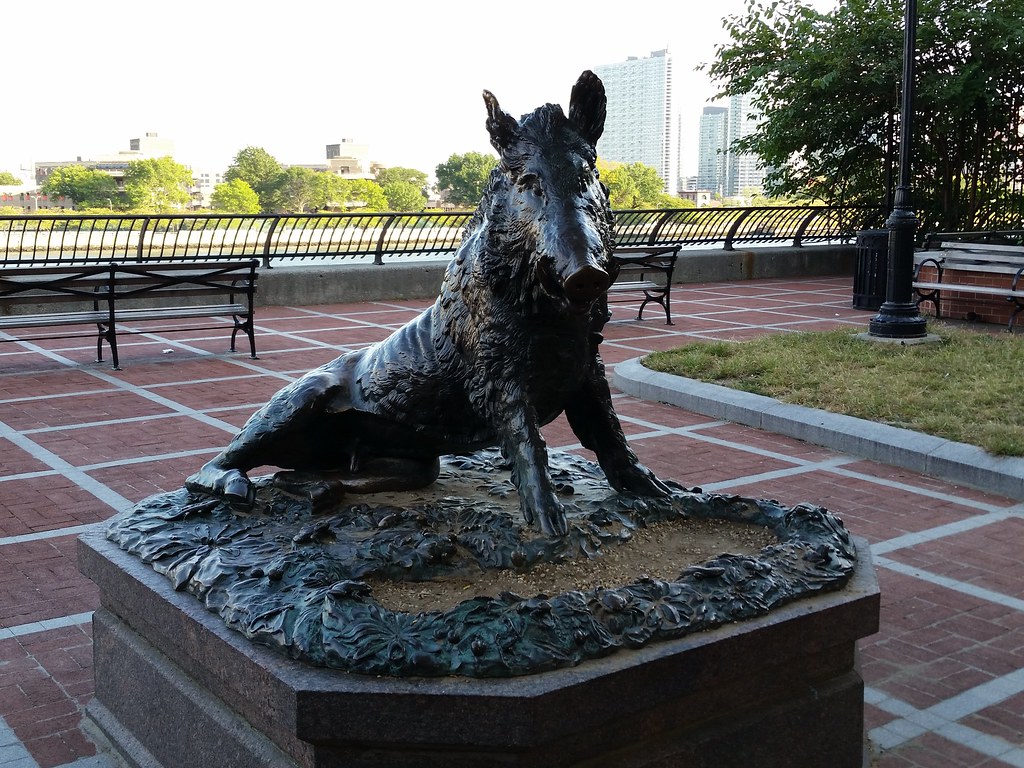
Copy of a copy of a copy? This boar, complete with a slew of surrounding critters (including a snake about to devour a frog), is a replica of the famous 17th-century Porcellino in Florence, Italy. The Porcellino was itself modeled on an earlier marble sculpture that is quite possibly a reproduction of a Hellenistic original.
This sculpture was a gift from Hugh Trumbull Adams, a neighborhood philanthropist who also donated the Peter Pan statue that now stands in Carl Schurz Park, as well as an armillary sphere located a few blocks south of here.


